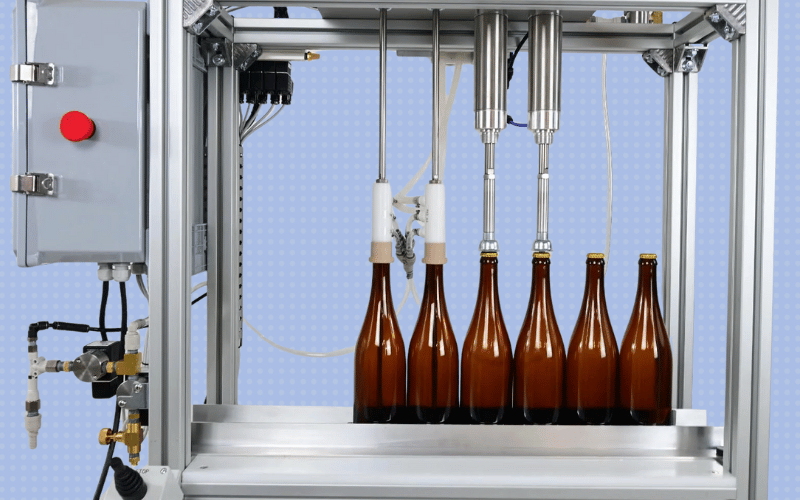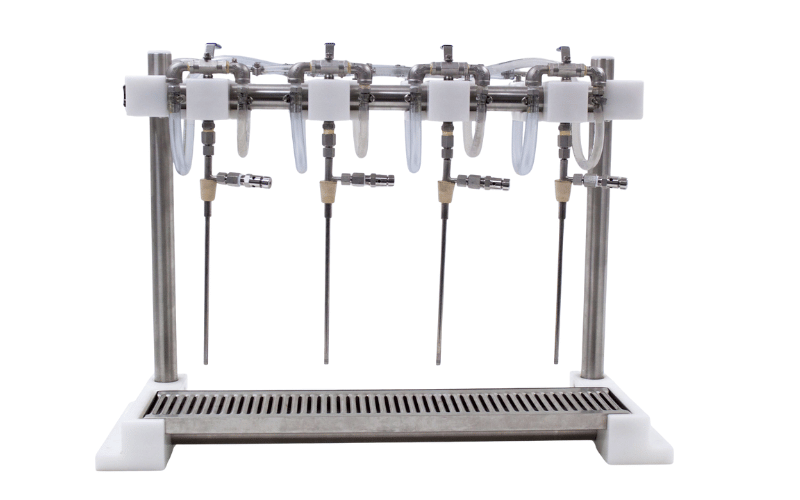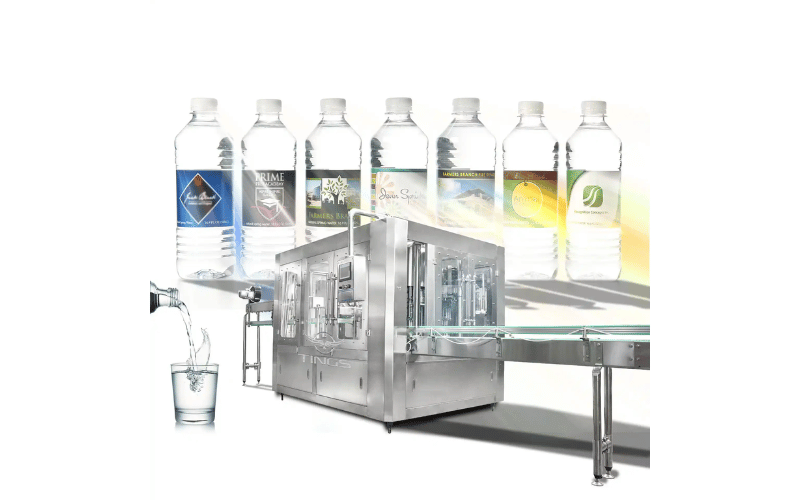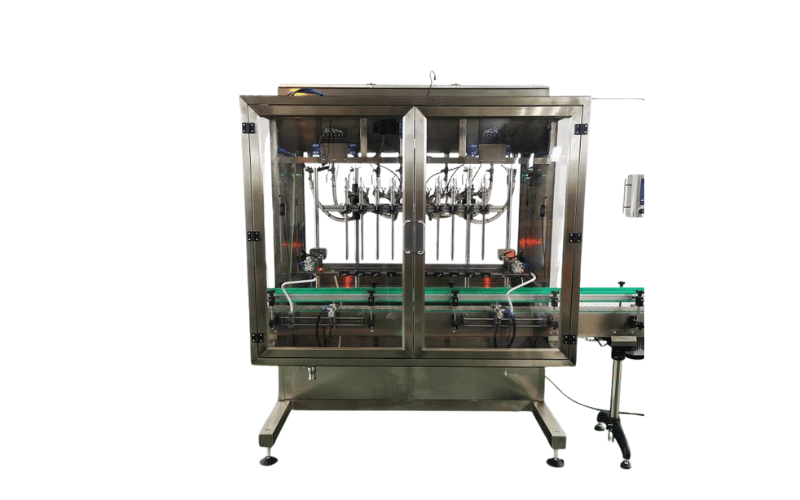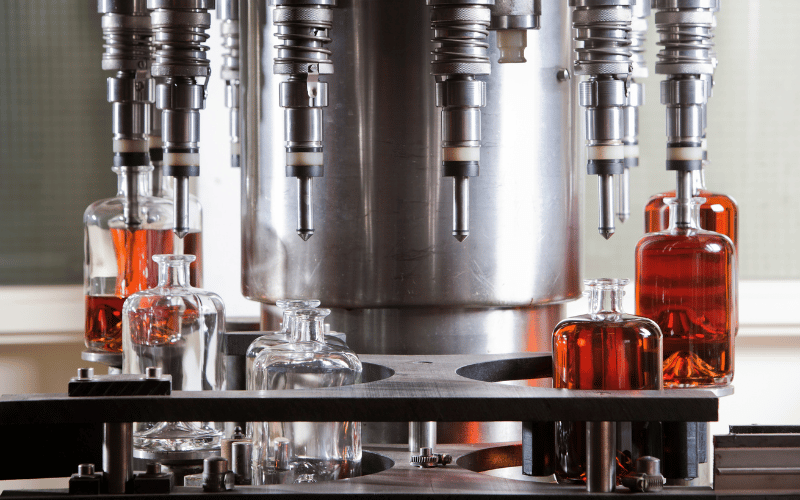Counter pressure bottle fillers are a game-changer for bottling carbonated beverages like beer and soda, ensuring quality, efficiency, and consistency throughout the process. These specialized devices work by equalizing the pressure inside the bottle with the carbonated liquid being dispensed, preventing foam and carbonation loss. Whether you’re a brewery, soda manufacturer, or homebrewer, counter pressure fillers offer a professional solution to preserve carbonation, minimize waste, and deliver a polished product. This guide dives into the mechanics, benefits, and best practices for using counter pressure bottle fillers, helping you optimize your bottling process.
Table of Contents
ToggleIntroduction to Counter Pressure Bottle Fillers
Counter pressure bottle fillers are specialized tools designed to fill bottles with carbonated beverages like beer or soda without losing carbonation or creating excessive foam. These devices are essential for maintaining product quality during the bottling process.
What is a Counter Pressure Bottle Filler?
A counter pressure bottle filler is a device that fills bottles by equalizing the pressure inside the bottle with the pressure of the carbonated liquid being dispensed. This prevents the liquid from foaming excessively or losing its carbonation. The system typically includes a filling nozzle, pressure controls, and a mechanism to seal the bottle during the process.
This method is widely used in breweries, soda production, and even homebrewing setups to ensure that beverages retain their fizz and freshness.
Benefits of Using a Counter Pressure Filler
- Preserves Carbonation: By maintaining equal pressure, the filler prevents the loss of carbonation, ensuring the beverage stays fizzy and fresh.
- Minimizes Foam: Excessive foam can lead to product waste and inconsistent fills. Counter pressure fillers reduce foam, resulting in precise and efficient bottling.
- Improves Shelf Life: The controlled filling process minimizes oxygen exposure, which can degrade the beverage over time.
- Versatility: These fillers can handle a variety of carbonated beverages, making them suitable for breweries, soda manufacturers, and homebrewers.
- Professional Results: Counter pressure fillers provide consistent fills, giving bottled beverages a polished, professional appearance.
Overview of the Bottling Method
The counter pressure bottling process involves several key steps:
- Prepare the Bottle: Clean and sanitize the bottle to ensure it’s free of contaminants.
- Pressurize the Bottle: The filler pressurizes the bottle to match the pressure of the carbonated liquid, preventing foam and carbonation loss.
- Fill the Bottle: The liquid is dispensed into the bottle at a controlled rate, ensuring an even fill without spillage.
- Release Pressure: Once the bottle is filled, the pressure is gradually released to prevent sudden foaming.
- Seal the Bottle: The bottle is capped immediately to lock in carbonation and maintain freshness.
This method ensures that every bottle is filled with precision, preserving the quality and taste of the beverage.
Understanding the Mechanics of Bottle Fillers
Bottle fillers are essential tools in the beverage industry, designed to transfer liquids into bottles efficiently and without compromising quality. Among the various types, counter pressure bottle fillers stand out for their ability to handle carbonated beverages with precision.
How a Counter Pressure Bottle Filler Works
A counter pressure bottle filler uses a precise process to maintain carbonation and prevent foaming during bottling. By equalizing the pressure inside the bottle with the pressure of the carbonated liquid, it ensures a smooth and efficient fill. Here’s a detailed step-by-step breakdown:
- Pressurizing the Bottle: The filler creates a tight seal around the bottle and introduces CO2 gas to purge oxygen and match the pressure of the carbonated liquid. This step is critical for preventing foam and preserving carbonation.
- Filling the Bottle: Once the pressure inside the bottle matches the liquid source, the filler allows the carbonated beverage to flow in from the bottom. The controlled flow rate minimizes turbulence, ensuring a clean pour with minimal foam.
- Releasing Excess Pressure: After the bottle is filled, the system gradually releases the internal pressure through a relief valve. This prevents sudden foaming or spillage, which could waste product or compromise quality.
- Capping the Bottle: The bottle is immediately capped to lock in carbonation and maintain freshness. This step ensures the beverage retains its intended flavor and fizz until it’s opened.
This method is ideal for bottling carbonated beverages like beer and soda, delivering consistent, professional-quality results while minimizing waste and preserving product integrity.
Key Components of a Counter Pressure Filler
-
Filling Nozzle: The filling nozzle is designed to deliver liquid directly into the bottle from the bottom, reducing turbulence and foam. High-quality nozzles often include adjustable flow controls, allowing users to fine-tune the pour rate for different beverage types and carbonation levels.
-
Pressure Regulator: The pressure regulator ensures that the CO2 pressure remains consistent throughout the bottling process. This prevents sudden pressure drops or spikes, which could lead to excessive foaming or carbonation loss. Advanced regulators often include gauges for precise monitoring.
-
Sealing Mechanism: The sealing mechanism creates an airtight seal around the bottle neck, preventing leaks and ensuring proper pressurization. Some systems use adjustable clamps or rubber gaskets to accommodate bottles of varying sizes and shapes.
-
Gas Inlet: The gas inlet introduces CO2 (or another gas) into the bottle to purge oxygen and pressurize it before filling. This step is crucial for maintaining carbonation and preventing oxidation, which can degrade the beverage’s flavor and shelf life.
-
Pressure Release Valve: The pressure release valve gradually vents excess gas from the bottle after filling. This controlled release prevents sudden foaming or spillage, ensuring a clean and efficient bottling process. Many systems allow users to adjust the release rate for optimal results.
Each of these components works together to ensure precision, efficiency, and quality in the bottling process, making counter pressure fillers an indispensable tool for carbonated beverage production.
Difference Between Counter Pressure and Traditional Fillers
The primary distinction between counter pressure fillers and traditional fillers lies in their handling of carbonation and pressure:
- Counter Pressure Fillers: These systems pressurize the bottle to match the liquid’s pressure, preventing foam and carbonation loss. They are ideal for carbonated beverages and ensure consistent, high-quality fills.
- Traditional Fillers: These systems rely on gravity or pumps to fill bottles. While suitable for still beverages like water or juice, they can cause excessive foaming and carbonation loss when used with carbonated drinks.
By understanding these differences, beverage producers can choose the right filler for their specific needs, ensuring optimal product quality and efficiency.
Choosing the Right Bottle Filler
Selecting the right bottle filler is crucial for ensuring efficiency, product quality, and ease of use in your bottling process. With various options available, understanding the key factors and comparing popular models can help you make an informed decision.
Factors to Consider When Selecting a Bottle Filler
- Type of Beverage: Determine whether you’re bottling carbonated or still beverages. Counter pressure fillers are ideal for carbonated drinks, while gravity fillers work well for still liquids.
- Volume Requirements: Assess your production scale. High-volume operations may require automated or multi-head fillers, while smaller setups can use manual or single-head models.
- Ease of Use: Look for a system that is intuitive and easy to operate, especially if multiple staff members will be using it.
- Maintenance Needs: Choose a filler with straightforward cleaning and maintenance processes to minimize downtime.
- Budget: Consider the upfront cost and long-term value. While some systems may have a higher initial price, their efficiency and durability can save money over time.
By evaluating these factors, you can select a bottle filler that aligns with your specific needs and operational goals.
Comparative Review of Popular Bottle Fillers
- Gravity Fillers: These are simple and cost-effective, making them ideal for still beverages like water or juice. However, they are not suitable for carbonated drinks due to foaming and carbonation loss.
- Pump Fillers: These systems use a pump to transfer liquid into bottles. They are versatile but may require more maintenance due to moving parts.
- Counter Pressure Fillers: Designed for carbonated beverages, these fillers maintain pressure inside the bottle to prevent foam and carbonation loss. They are more expensive but offer superior results for fizzy drinks.
- Automatic Fillers: These high-capacity systems are perfect for large-scale operations. They offer speed and consistency but come with a higher price tag and more complex maintenance.
Each type of filler has its strengths and weaknesses, so the best choice depends on your specific bottling needs.
Why Choose the Tapcooler Counter Pressure Bottle Filler?
The Tapcooler Counter Pressure Bottle Filler stands out as a top choice for homebrewers and small-scale producers. Here’s why:
- Compact Design: Its small size makes it perfect for homebrewing setups or limited spaces.
- Ease of Use: The Tapcooler is user-friendly, with straightforward controls that make bottling quick and hassle-free.
- Preserves Carbonation: By maintaining equal pressure during filling, it ensures your beverages retain their fizz and freshness.
- Durable Construction: Made from high-quality materials, the Tapcooler is built to last, even with frequent use.
- Affordable Price: Compared to other counter pressure fillers, the Tapcooler offers excellent value for money without compromising on performance.
For those looking to bottle carbonated beverages efficiently and effectively, the Tapcooler Counter Pressure Bottle Filler is a reliable and practical choice.
Operational Guidelines for Best Results
To achieve the best results when bottling beverages, it’s essential to follow proper operational guidelines. These steps ensure your product maintains its quality, carbonation, and freshness throughout the bottling process.
Preparing Your Beer for Bottling
- Chill the Beer: Ensure your beer is cold (ideally around 32–40°F or 0–4°C). Cold temperatures reduce foaming and help retain carbonation during bottling.
- Carbonate Properly: Verify that your beer is carbonated to the desired level. Use a CO2 regulator to adjust and maintain consistent carbonation.
- Sanitize Equipment: Clean and sanitize all bottles, hoses, and the counter pressure filler to prevent contamination and ensure a clean pour.
- Check Pressure Levels: Set the CO2 pressure in the keg to match the pressure required for bottling. This prevents sudden foaming or carbonation loss.
Proper preparation ensures a smooth bottling process and preserves the quality of your beer.
Step-by-Step Guide to Using a Counter Pressure Filler
- Set Up the Filler: Attach the counter pressure filler to the keg and CO2 source. Ensure all connections are secure and leak-free.
- Pressurize the Bottle: Place the bottle on the filler and pressurize it with CO2 to match the keg’s pressure. This step prevents foaming during filling.
- Start Filling: Open the liquid valve to allow beer to flow into the bottle. Adjust the flow rate to minimize turbulence and foam.
- Monitor the Fill Level: Stop filling when the beer reaches the desired level, leaving a small gap for the cap.
- Release Pressure Gradually: Slowly release the pressure inside the bottle to avoid sudden foaming or spillage.
- Cap the Bottle Immediately: Seal the bottle with a cap to lock in carbonation and maintain freshness.
Following these steps ensures consistent, high-quality fills with minimal waste.
Avoiding Common Mistakes During Bottle Filling
- Skipping Sanitation: Failing to sanitize bottles and equipment can lead to contamination and spoilage.
- Incorrect Pressure Settings: Setting the CO2 pressure too high or too low can cause excessive foam or flat beer.
- Filling Too Quickly: Pouring too fast creates turbulence, leading to foam and wasted product.
- Not Chilling the Beer: Warm beer foams excessively, making it difficult to achieve a clean fill.
- Delaying Capping: Leaving bottles uncapped for too long allows carbonation to escape, reducing the beer’s quality.
By avoiding these common mistakes, you can streamline the bottling process and ensure your beer reaches customers in perfect condition.
Maintaining Quality in Your Bottling Process
Maintaining the quality of your beverage during the bottling process is essential to ensure freshness, flavor, and customer satisfaction. By focusing on key factors like oxygen exposure, foam control, and carbonation, you can deliver a consistently high-quality product.
Minimizing Exposure to Oxygen
Oxygen is one of the biggest threats to beverage quality, as it can lead to oxidation, off-flavors, and reduced shelf life. Here’s how to minimize oxygen exposure:
- Purge Bottles with CO2: Before filling, flush each bottle with CO2 to displace oxygen. This creates a protective layer that prevents oxidation.
- Seal Immediately: Cap the bottle as soon as it’s filled to prevent air from entering.
- Check Equipment for Leaks: Ensure all connections in your bottling system are airtight to avoid oxygen ingress during the process.
- Use a Counter Pressure Filler: These systems are designed to minimize oxygen exposure by maintaining a sealed environment during filling.
Reducing oxygen exposure preserves the beverage’s flavor and extends its shelf life.
Controlling Foam During the Filling Process
Excessive foam can lead to product waste and inconsistent fills. To control foam effectively:
- Chill the Beverage: Cold liquids foam less, so ensure your beverage is properly chilled before bottling.
- Adjust Flow Rate: Use a slower flow rate to reduce turbulence and foam formation.
- Maintain Proper Pressure: Match the pressure in the bottle to the pressure of the liquid source to prevent sudden foaming.
- Use a Foam-Free Nozzle: Some counter pressure fillers come with specialized nozzles designed to minimize foam.
By managing foam, you can achieve cleaner fills and reduce waste.
Ensuring Proper Carbonation Levels
Carbonation is a critical aspect of many beverages, especially beer and soda. To maintain proper carbonation levels:
- Monitor CO2 Pressure: Use a regulator to ensure the CO2 pressure in the keg matches the desired carbonation level.
- Avoid Over-Carbonation: Excessive carbonation can lead to foaming and difficulty during bottling. Test the beverage beforehand to ensure it’s at the right level.
- Seal Bottles Quickly: Cap the bottles immediately after filling to lock in carbonation and prevent it from escaping.
- Test Regularly: Periodically test the carbonation levels of your bottled product to ensure consistency.
Maintaining proper carbonation enhances the drinking experience and ensures your product meets customer expectations.
Conclusion and Final Thoughts
Recap of Key Points
Throughout this guide, we’ve explored the essential aspects of bottle filling, focusing on maintaining quality, efficiency, and consistency. Key takeaways include:
- Understanding Bottle Fillers: Counter pressure fillers are ideal for carbonated beverages, preserving carbonation and minimizing foam.
- Operational Best Practices: Proper preparation, such as chilling beverages and sanitizing equipment, ensures a smooth bottling process.
- Quality Maintenance: Minimizing oxygen exposure, controlling foam, and ensuring proper carbonation levels are critical for delivering a high-quality product.
- Choosing the Right Equipment: Selecting a filler that matches your production needs and beverage type can significantly improve efficiency and reduce waste.
By implementing these practices, you can optimize your bottling process and maintain the integrity of your product.
Future Trends in Bottle Filling Technology
The bottle filling industry continues to evolve, with new technologies enhancing efficiency and sustainability. Emerging trends include:
- Automation and AI Integration: Advanced systems with AI capabilities are streamlining operations, reducing human error, and improving precision.
- Eco-Friendly Solutions: Manufacturers are developing fillers that use less energy and support recyclable or biodegradable packaging.
- Smart Monitoring Systems: Real-time monitoring and diagnostics are becoming standard, allowing operators to track performance and address issues proactively.
- Customizable Equipment: Modular designs are enabling businesses to adapt their systems to specific needs, from small-scale operations to large production lines.
Staying informed about these trends can help businesses remain competitive and adopt innovative solutions that enhance their bottling processes.
Encouraging Efficient Bottling Practices
Efficiency in bottling not only saves time and resources but also ensures a better product for customers. To encourage efficient practices:
- Train Staff Thoroughly: Ensure all team members understand how to operate and maintain the equipment properly.
- Schedule Regular Maintenance: Prevent downtime by keeping equipment in top condition through routine checks and cleaning.
- Monitor Key Metrics: Track factors like fill time, waste levels, and carbonation consistency to identify areas for improvement.
- Invest in Quality Equipment: High-quality fillers may have a higher upfront cost but deliver long-term savings through reduced waste and improved efficiency.
By focusing on these practices, businesses can optimize their bottling operations, reduce costs, and deliver a superior product to their customers.
Frequently Asked Questions
Q: What is a counter pressure beer bottle filler, and how does it work?
A: A counter pressure beer bottle filler is a specialized device for bottling carbonated beer. It fills bottles from the bottom while maintaining internal pressure to prevent oxygen exposure and carbonation loss. The device uses a valve system to introduce CO2, pressurize the bottle, and allow beer to flow in smoothly without excessive foam.
Q: How do you fill bottles using a counter pressure filler?
A: To fill bottles with a counter pressure filler, connect it to a keg or CO2 source. Start by purging the bottle with CO2 to remove oxygen. Once the bottle is pressurized, let the carbonated beer flow in from the bottom. Fill slowly to minimize foam and ensure the proper fill level without overfilling.
Q: What are the benefits of using a counter pressure filler for homebrewing?
A: A counter pressure filler preserves carbonation, reduces oxygen exposure, and maintains the quality of bottled beer. It allows homebrewers to bottle beer without losing flavor or freshness. The filler also accommodates various bottle sizes, such as growlers and standard beer bottles, making it versatile for different brewing setups.
Q: How does a relief valve function in a counter pressure beer bottle filler?
A: A relief valve regulates pressure during the bottling process. It releases excess pressure to prevent over-pressurization and potential bottle breakage. By maintaining steady pressure, the relief valve ensures a smooth flow of carbonated beer into the bottle while preserving its quality.
Q: Can a counter pressure filler be used with a kegging system?
A: Yes, a counter pressure filler works seamlessly with a kegging system. It connects to the keg, allowing carbonated beer to transfer into bottles. The filler uses CO2 pressure from the keg to purge and pressurize bottles before filling, ensuring an efficient and clean bottling process.
Q: What is the difference between a counter pressure filler and traditional bottling methods?
A: Traditional bottling methods involve direct pouring, which often causes excessive foam and oxygen exposure, compromising beer quality. A counter pressure filler maintains a pressurized environment during filling, reducing foam and preserving carbonation, making it ideal for bottling carbonated beer.
Q: How can you prevent foam during the filling process with a counter pressure filler?
A: To prevent foam, purge the bottle with CO2 before filling and fill slowly from the bottom to minimize turbulence. Use a filler with a gas valve and maintain proper pressure in the bottle during filling. These steps reduce foam and improve bottling efficiency.
Q: What is the importance of sanitizing before using a counter pressure filler?
A: Sanitizing is essential to prevent contamination in bottled beer. Bacteria and wild yeast can spoil the beer, causing off-flavors and spoilage. By thoroughly sanitizing bottles and filler components, homebrewers can ensure their beer stays fresh and retains its intended flavor.
Q: How does the Blichmann beer gun compare to other counter pressure fillers?
A: The Blichmann beer gun is a user-friendly and effective tool for bottling carbonated beer. It features an innovative design that reduces foam and simplifies handling. With a built-in pressure relief valve, it ensures consistent quality during bottling, making it a reliable choice for homebrewers.
Concluding Summary:
Counter pressure bottle fillers are essential tools for maintaining the quality and freshness of carbonated beverages during bottling. By preserving carbonation, minimizing foam, and reducing oxygen exposure, these systems ensure a consistent, high-quality product. From understanding the mechanics of counter pressure fillers to implementing best practices like proper sanitation, pressure control, and efficient workflows, businesses can streamline their bottling operations and enhance customer satisfaction. As bottling technology continues to evolve with trends like automation and eco-friendly solutions, investing in the right equipment and practices will keep your operations efficient and your beverages top-notch.

